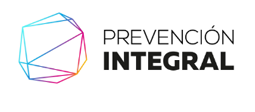ChatGPT, the workplace and HR: What’s next?
ChatGPT, the workplace and HR: What’s next?

Why You Should Care
The game is changing, and HR can play it to our advantage.
Lisbeth Claus rounds off her three-part feature for UNLEASH and asks, what will you do next?
Part one, the scene setter, of Lisbeth Claus’ essay can be found here, and part two covering use cases and warnings is here, but now we look forward.
What comes after the hottest AI tool of late 2022 and beyond?
Is ChatGPT just another tool?
Although still fraught with issues, ChatGPT technology is a revolutionary advance in artificial intelligence that will greatly impact how work is done, including our daily HR activities.
While chatbots can create a variety of HR work products, they still need HR expertise to train the algorithm and complete higher-level critical thinking tasks currently not possible with AI.
For companies with huge amounts of proprietary organizational data on their products and employees, the technology is highly scalable and easy to deploy in a cost-effective manner to increase organizational effectiveness.
Currently, these chatbots based on deep databases still require one-time investments to complete certain HR activities and reduce the time, effort, and cost required to complete these tasks.
In addition to the free-for-all version of ChatGPT, OpenAI announced an upcoming subscription service ($20 a month in the U.S. initially) to access the overloaded site and get access to additional higher-level features of the software.
Soon additional applications of the technology will be available to any organization and will be integrated in software-as-a-service business applications by different HR and IT vendors.
When that happens, ChatGPT is likely to create another paradigm shift in the way we work not unlike the disruption of my own work over my lifetime, where my HR work tools gradually evolved from the manual typewriter to the personal computer, to my laptop, to my Blackberry, and my iPhone!
The only difference is that moving from one tipping point to the other will go much faster now than in the past.
To remain relevant in our HR work, we must adapt to such rapidly emerging platform shifts and be part of the conversation to overcome the many issues the tool currently has.
Once IT companies integrate and scale these AI tools in our business applications, HR work will be augmented by the technology and reduce burdensome administrative tasks allowing us to focus our work on more value-added rather than repetitive tasks.
It behooves us to educate ourselves, learn what experts (proponents and opponents) have to say, follow the research and tests that are now widely being conducted on the technology, have conversations with our managers, teams, other HR colleagues who are further into the adoption of such tools, and cultivate and upskill those people management competencies that are harder to automate—empathy, creativity, critical thinking, problem solving but also basic math, writing, and communication skills.
Ultimately, we need to decide whether we will be (early) adopters or not and what controls will be put into place once we adopt and use and the tools.
Looking ahead
As someone who is personally deeply entrenched in learning and development (L&D) activities, I see a great opportunity for using the tool in building deep expertise knowledge systems and making instructional design more interactive, cost effective and scalable.
Integrating the tool in my work will not only redefine my role—perhaps even another personal reinvention as an educator—it will also require a great deal of effort on my part to change the way I have been curating knowledge for teaching.
But, if the promise of tools like ChatGPT is realized, AI also has the potential to become an even greater partner in my ability to coach the learning process of others through technological augmentation.
However, for now at least, I am still the professor!








